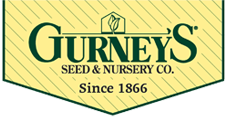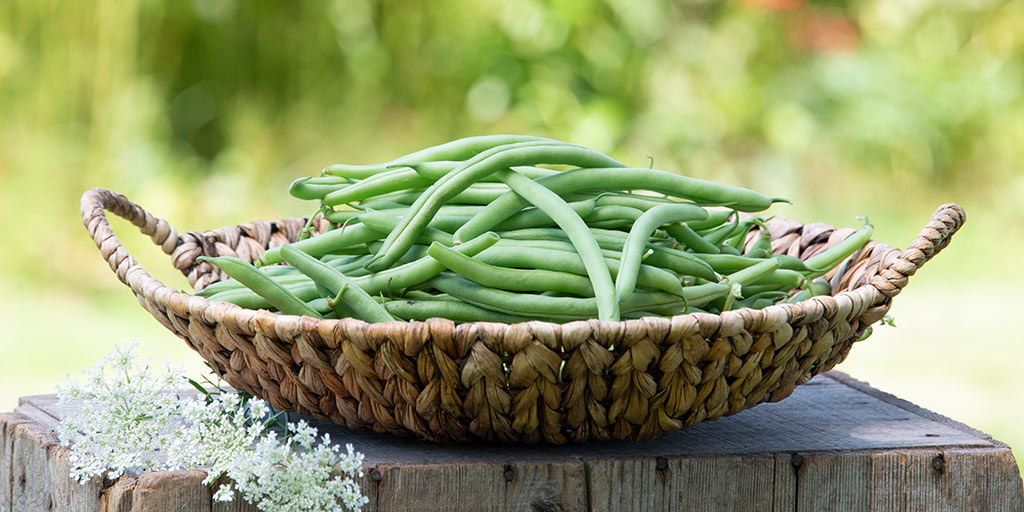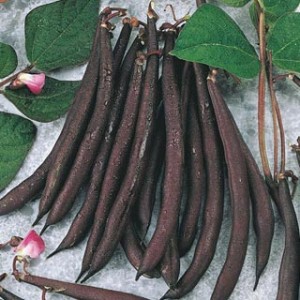Often the very first plants many of us grow from seeds are beans. Preschoolers carefully plant them and water them, toddling home with little cups filled with soil and a small bean shoot. In middle school, when science teachers explain germination to their students, everyone gets a bean seed, and places it in a wet paper towel, and sets it on a window ledge to watch, and track, the germination process. Why beans? Of all of the plants, they are truly the easiest to grow from seed with very little care, making them an ideal plant for gardeners of all ages. As an added bonus, beans are legumes and naturally add nitrogen to your soil, making them a good choice to include in your vegetable garden.
How Do Beans Grow?
Beans are grown from seeds. Each seed is an embryo encased in a hard coat or outer layer. With the right amount of water, oxygen and warmth, the embryo breaks through the hard outer layer. The seed leaves push through the soil and a root system begins developing.
Once above ground, the bean plant continues to develop. Some bean plants have a bush habit while others have a vining or climbing habit and require a trellis or fence for support. Some gardeners plant beans and corn together so that the corn stalks can provide support to the bean plants.
About 6-8 weeks after germination, bean plants start flowering. The timeframe for flowering varies depending on the bean variety and the growing conditions. Most bean plants are self-pollinating.
After flowering, pods begin forming. The size of the pods and the time to maturity will depend on the variety and growing conditions. Generally snap beans are ready for harvest 55-65 days after sowing while pole beans are ready for harvest 65-70 days after sowing.
Types of Garden Beans
There are two groups of beans – shell beans, which are grown for their seeds, and snap beans, which are grown for their edible pods. Those two groups are then broken down into four groups, based on their growing habits: bush beans (self-supporting), pole beans (vines that need support), runner beans (like pole beans but need cool conditions), and half-runners (somewhere between bush and pole in support needs).
Because there are so many garden beans, it’s important to do a little research and figure out which beans will grow best in your region. I like to flip through my seed catalogs, ask neighbors, friends, and especially regulars at my local garden center. Often times you’ll get advice about which beans grow best or, if you are lucky, get a few seeds to try from someone’s collection. Thanks to the wide variety of beans available, there is truly a bean for every garden, no matter the size, and every gardener, no matter their experience level.
Here are a few of my bean picks from the Gurney’s collection for the upcoming year:
Blue Lake Pole Beans – A Gurney’s Choice for good reason- these beans are easy to grow and fast (63 days from seed to harvest). Lots of seeds and lots of beans, this is a great bean for a beginning gardener who wants to see results and not spend a ton of time tending the plants, or a great introduction to vegetable gardening for kids or grandkids, who will have fun harvesting the beans. These are also great for canning. Be sure to get some kind of support, like a pole bean tower or vegetable trellis.
Improved Golden Wax Bush Beans– Another Gurney’s Choice, this bean is perfect for the gardener with a small space as it has a very minimal spread, only grows 18 inches high, and still gives high yields. A fast grower, just 50 days from seed to harvest, these big buttery-flavored beans are stringless, delicious, and good for canning.
Roma II Bush Beans – These flat broad beans can grow up to six inches long and still maintain their full flavor. Perfect for those looking for something a little different, working in a compact space; these reach maturity in 59 days. Flavor and color do not fade with processing, making this bean a great option for those who enjoy home preserving.
Purple Pod Pole Beans – For something absolutely gorgeous and delicious, plant these in your garden- even better yet, use them as a way to add vegetables to your existing perennial gardens, as the leaves are beautiful and the blooms are pink before the deep purple pods emerge. 67 days from seeds to harvest and would benefit from a structure to twine around- perhaps an archway, fence, or bean trellis.
Where Do Beans Grow?
Beans can be grown throughout much of the United States. They are warm-season vegetables and should be sown after the last spring frost date in your area. Beans also grow best in full sun (six or more hours of direct sunlight daily) and in well-drained soil that is rich in organic matter.
How to Grow Beans
Step 1: Select a spot in your garden that receives at least 6 hours of direct sunlight daily and has well-drained soil. Working compost into the soil improves drainage and aeration.
Step 2: Wait until the soil temperature is at least 60 degrees F. before planting.
Step 3: Sow bean seeds about 1 to 1½” deep, 3-4″ apart, and in rows 24-36″ apart. Loosely cover with soil and water well.
Step 4: If growing pole beans, erect a trellis or support structure for them to climb. This should be done when you sow bean seeds.
Step 5: Beans have average water needs and require about 1″ of rainfall weekly.
Step 6: Mulching helps suppress weeds and retains soil moisture. Weed around the bean plants frequently, and avoid deep cultivation when can damage the plant’s root structure. To help prevent disease problems, avoid handling the plants when they are wet.
Step 7: Monitor your plants frequently for signs of insect damage or disease. Good gardening practices such as practicing crop rotation, avoiding overhead watering and avoiding overcrowding helps keep your plants healthy.
Harvesting & Storing Garden Beans
Snap beans, eaten for the pod, can be harvested at any stage of the pod formation. Pods are most tender when they are smaller, and become more fibrous as they get larger. As they get larger, seeds inside the pods get larger, causing the pods to bulge. Snap beans can be eaten fresh, cooked into recipes, canned or frozen. If you are not going to cook or process the beans, they can be refrigerated.
Shell beans, eaten for their pods, should be harvested when the pods are thin and tough, but not dry. Split open the pods and remove the beans. The beans should be refrigerated if not cooked or processed right away.
If growing dry beans, leave the pods on the vines to dry. Wait to harvest until the beans inside the pods are dry enough to rattle. Dry beans can be stored in jars or bags in a dark, dry place.
No matter which bean you choose, you are sure to have success with this easy-to-grow vegetable. Check out Gurney’s for all of your bean planting needs, including a- vegetable trellis, bean tower, and of course, Gurney’s Vegetable Food, and other gardening aids.


